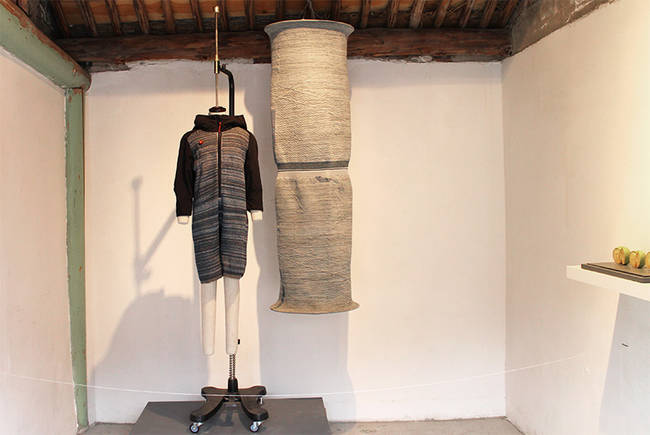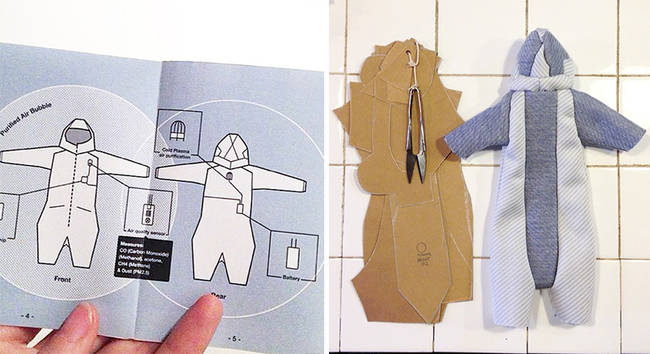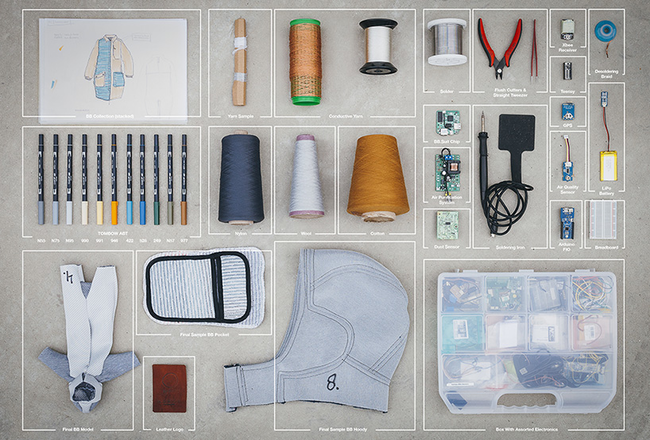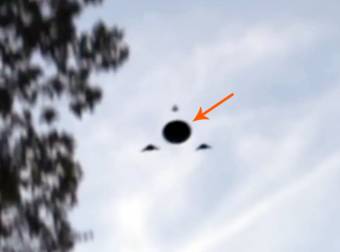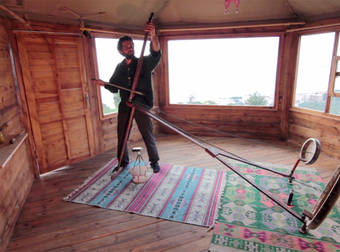The BBSuit 0.2, created for the 2014 Beijing Design Week, is not only a cutting edge piece of technology; it’s also able to clean the air around the wearer. Using cold plasma technology, as well as built-in WiFi and GPS, the suit neutralizes harmful pollutants and germs. The technology is integrated into the fabric via electrical wires.
The suit modeled on the streets of Beijing.
The suit is a hooded, loose-fitting onesie at this point in its evolution. Its conception stems from a collaborative effort between designers Eva de Laat and Borre Akkersdijk, StudioFriso and Want, as well as Martijn ten Bhomer from the Eindhoven University of Technology, and clean-air tech developer Squair. Daan Spangenberg provided infographics.
The BBSuit 0.2 on display as part of the BJDW 2014 in Beijing’s Dashilar district.
The BBSuit was originally designed for the SXSW festival in the U.S., and only had the Wifi and GPS abilities. It wasn’t until they teamed up with Squair that the designers included the air-cleaning feature. The teams decided to combine design and technology to create an item that could not only feature wearable technology, but could also contribute to the well-being of people in urban areas where air pollution is heaviest. If one person wearing the suit can create a purified “bubble” around themselves, then a larger number of people could serve as mobile air-scrubbers. The wearers would then increase the air quality of much larger areas. Sensors detecting air particles in a specific location could also contribute to environmental research.
Cold plasma technology scrubs the air by splitting water and oxygen molecules into negatively-charged free radicals. This process attracts and neutralizes potentially harmful particles such as dust, pollution and germs. The same process happens in nature on a larger scale, Squair explains, when lightning strikes. It’s why the air seems so crisp and fresh after a thunderstorm.
The suit’s concept design.
Some of the components that went into the BBSuit 0.2
The suit is still in its conceptual phase. The electrical components of the BBSuit were designed to be kept in a sealed compartment away from the wearer’s actual body. Regardless, the developers are still working to make it more realistic and accessible for real-world applications. The yarn that makes up the BBSuit’s fabric is itself conductive, so sensors can easily be placed anywhere on the suit.
“We present the problems around the complicated topic of air pollution, but also introduce new materials, wearable technologies, and innovative production processes. We challenge our visitors to develop with us,” says Borre Akkersdijk.
Akkersdijk also teamed up with animator Niels Hoebers to create a fictionalized video account of his creative process. It’s adorable!
Via designboom|Video: Niels Hoebers

